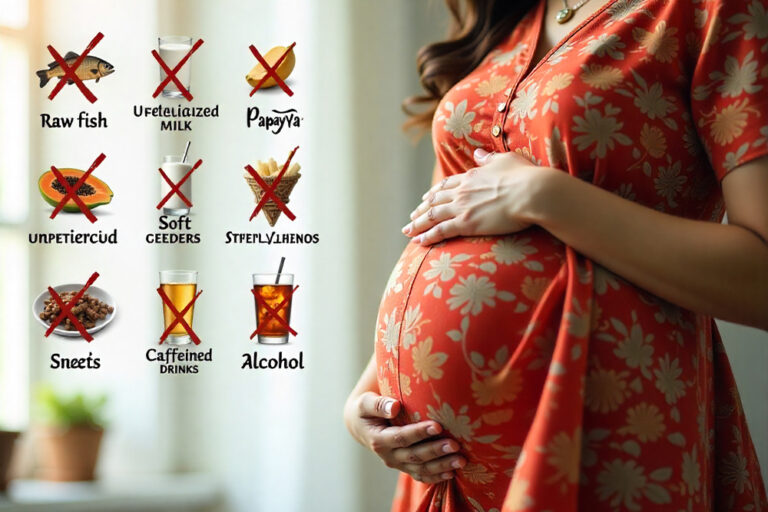1. Moon phases affect menstrual flow
It’s not a new notion. Some women refer to their menstrual cycle to be their “moon period.” It’s not surprising: It is true that the 29.5-day moon cycle (from the new moon until the new moon) is very similar to the typical menstrual cycle of 28 days. However, research has shown that there is no connection between menses and the moon. Furthermore, it’s difficult to imagine how a moon-menstrual connection would be beneficial for human reproduction.
2. The risk of lying prone after sexual activity increases the chance of getting pregnant
“How long do I stay on my back after having sex?” is one of the most frequent questions asked of Ob-GYNs. It is believed that sperm rushes back from your body after you’re standing due to gravity’s effects. However, the majority of sperm that have a possibility of fertilization have passed that point nearly immediately. There aren’t any studies that determine a link between the duration of recumbent post-postcoital time and subsequent rates of pregnancy, however there is an enormous study that studied the rate of pregnancies after insemination the office of a doctor. This study found no difference in rates of pregnancy between those who sat for fifteen minutes lying on their backs compared to those who stood up and moved about immediately after the procedure was over.
3. The women were never intended to enter menopausal stages.
Menopausal symptoms aren’t normal because for the vast majority of time, women do not have enough time to perceive them. It’s an assumption that is rooted in an incorrect perception of life expectancy, and also of the way society has traditionally tied the worth of women to their reproductive capabilities. Although in the past, the life expectancy of women was lower than 50 years, it’s certainly not like women died all over the world at fifty, and living long enough to be able to meet the demands of the needs of evolution. Actually, if you do not include the deaths of infants and children (which were mostly due to an absence of basic medical treatment, sanitation, and vaccinations) the woman’s life expectancy prior to 1900 is a significant increase. Women of the 17th century that survived the grueling process of childbirth, had an estimated life span of sixty years. The average life expectancy of men was never that much higher -but society has never had to justify the decline in fertility due to age function among men.
4. Women are the primary reason for infertility.
There are a variety of reasons why couple maybe infertile. The most common perception is that woman are solely responsible for infertility. In many cases, men are equally responsible for couples’ infertility as women are.
A survey revealed that 35 percent of couples suffering from infertility have male as well as female contributory factors. Additionally, 8 percent of couples who are infertile have male infertility as the sole cause.
Male infertility could be a result of variety of reasons. A few of them are the disruption of the testicular or ejaculatory function, hormonal issues or genetic conditions and aging, overuse of alcohol and drugs as well as obesity, exposure to testosterone, radiation and certain drugs.
Other myths which women should stop believing include:
Myth: Drinking alcohol might impair fertility.
Fact: There is no credible evidence that alcohol use causes infertility, although it does effect sexual performance. However, limiting alcohol consumption helps to improve general health.
Myth: Women who are in better physical shape have more children.
Fact: Health is significant. Weight and body fat percentage are relevant.
Having a normal ovulation and menstrual cycle is what aids in getting pregnant. Women at the opposite extreme may have difficulty getting pregnant, but
Myth: Breastfeeding renders you infertile.
Fact: The hormone that makes it possible to make milk, the first few months of nursing, these high levels may stop ovulation, but as time passes, the levels will drop and the person will begin to ovulate once more. They might conceive as a result.
Myth: After using the pill for a while, you become less fertile.
Fact: Women may become pregnant since it takes a few months for the ovulation cycle to become normal after stopping the pill usage.
Myth: Infertility is a mental health issue.
Fact: People close to you may frequently comment, “Infertility is all in your head,” with good intentions. However, in actuality, infertility is not a mental illness but rather a sickness or condition of the reproductive system. In fact, many infertile couples have one or more physical factors. So even while unwinding, taking a trip, or finding ways to de-stress will enhance your general wellbeing, these adjustments won’t address the issues with infertility.
Myth: Only women’s fertility is impacted by age.
Fact: It is a biological fact that both men and women lose the ability to become parents as they become older. It takes longer for women who are dating males over 40 years old to get pregnant. When it comes to getting pregnant, it can be difficult to distinguish between fact and fiction.
If you have any more queries about improving your chances of fertility, schedule a consultation with ESHA IVF.










